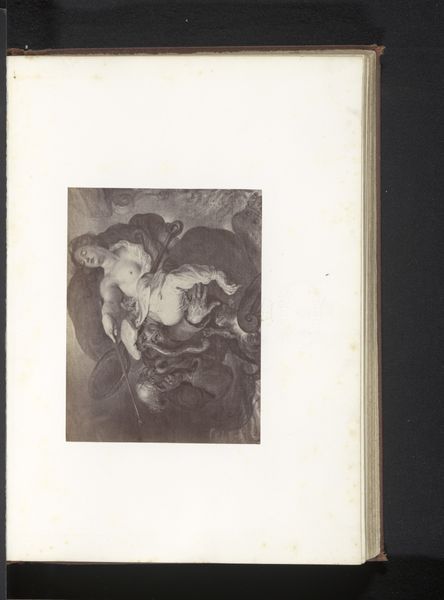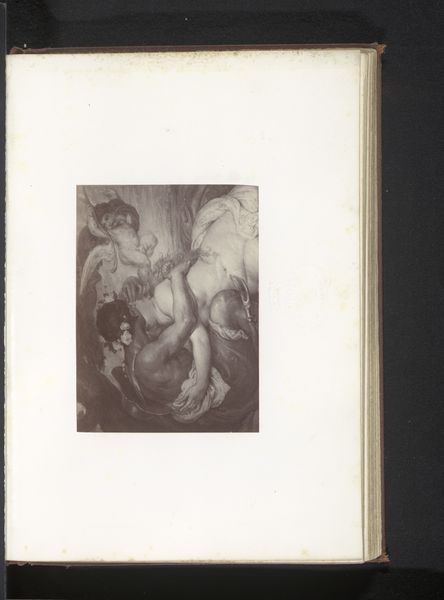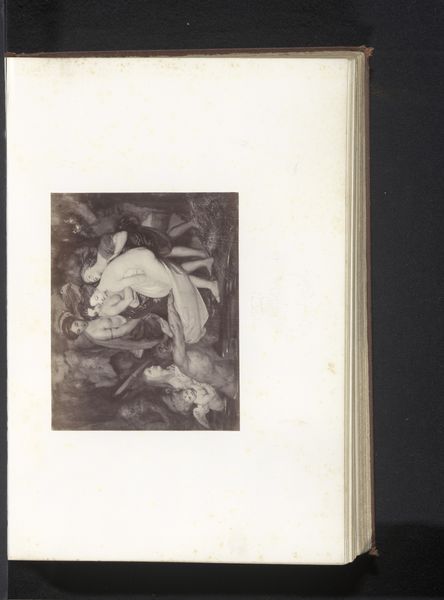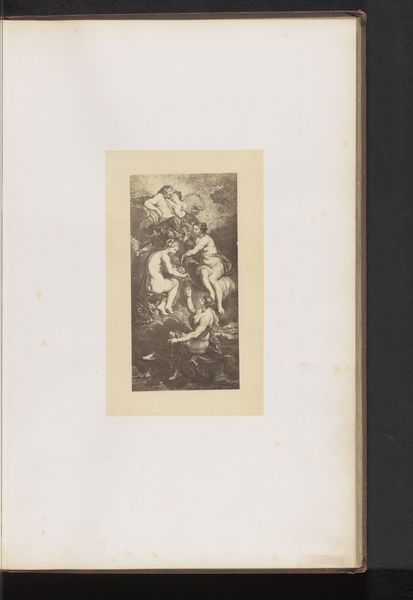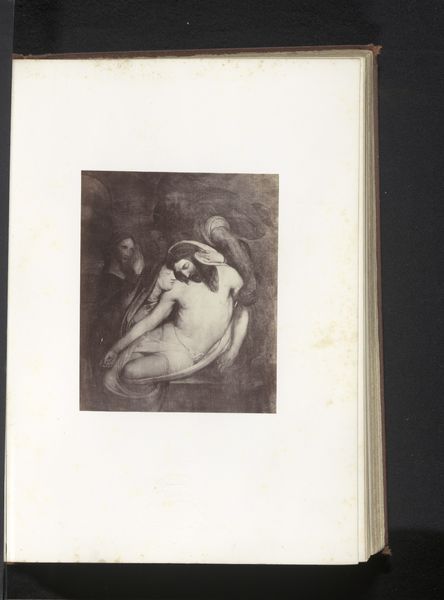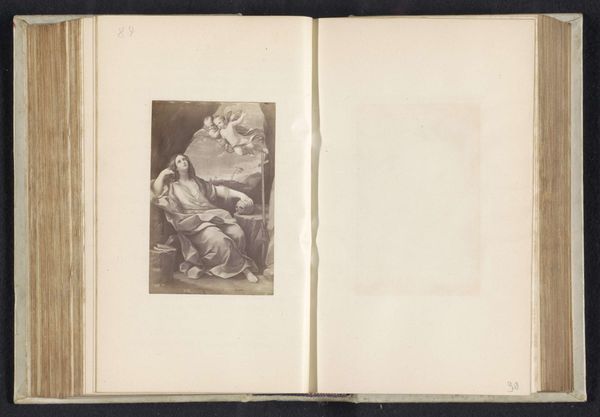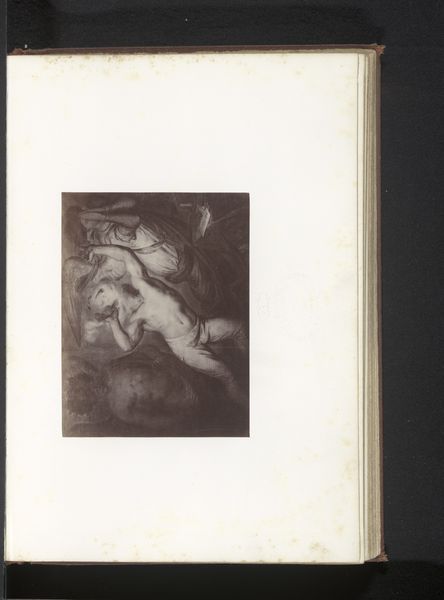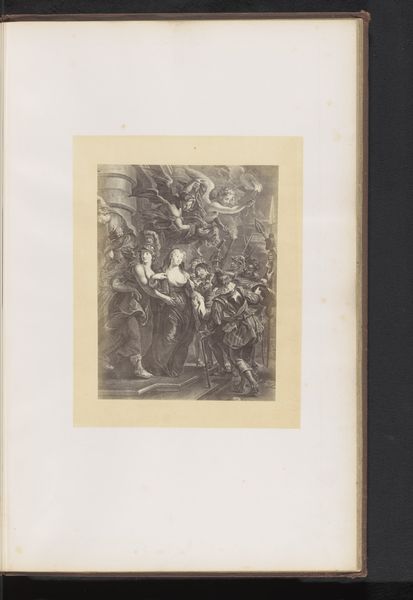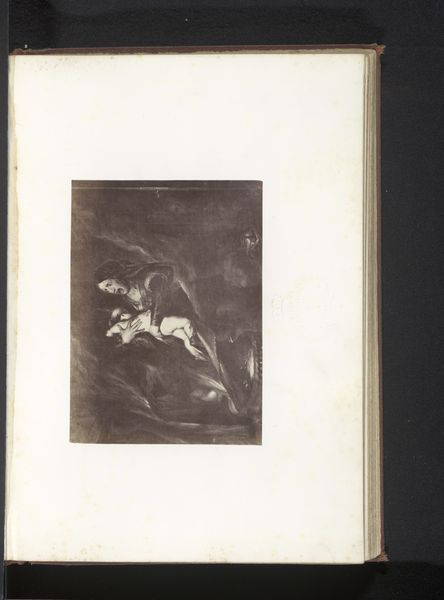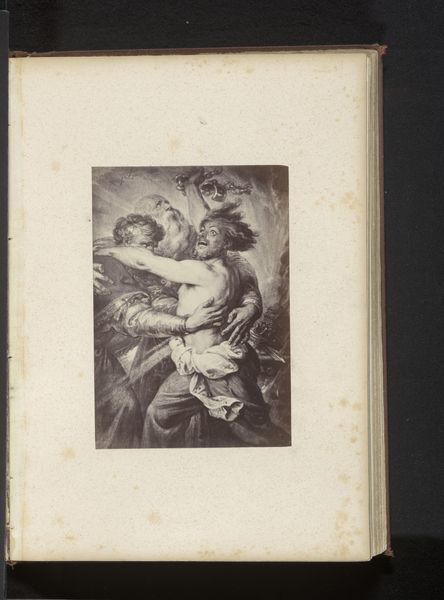
Fotoreproductie van De beschaving van de 19e eeuw door Antoine Wiertz before 1868
0:00
0:00
Dimensions: height 131 mm, width 98 mm
Copyright: Rijks Museum: Open Domain
Editor: Here we have a photographic reproduction of Antoine Wiertz’s “The civilisation of the 19th century”, created before 1868. The gelatin silver print gives it an ethereal, almost dreamlike quality, but the subject matter itself feels quite violent. How do you interpret this work, considering its historical context? Curator: The dramatic imagery immediately calls attention to Romanticism's focus on intense emotion. But consider this: the title itself is deeply ironic, particularly when viewed through a postcolonial lens. What is "civilization" when it is being defended with such explicit violence, such evident oppression? Who benefits, and who is sacrificed in this supposed march of progress? Editor: I see what you mean. The way the figures are posed, almost theatrical, gives it a performative aspect. Does this heighten the sense of the falseness? Curator: Precisely. The performativity serves to mask the violence inherent in upholding societal hierarchies. The image becomes a critique, intentionally or not, of the very concept of "civilization" being imposed, often through force, across the globe during the 19th century. What specific details jump out at you? Editor: The figures contorted in anguish... They make me think of those impacted and harmed by this supposed progress. It feels relevant today, as we're still grappling with the repercussions of colonialism. Curator: Indeed. This artwork invites us to confront the uncomfortable truths about power, progress, and the narratives we construct to justify inequality. Editor: I never thought a photo of a painting could provoke such questions of historical injustice. Curator: Art acts as an agent to help us re-interpret the past.
Comments
No comments
Be the first to comment and join the conversation on the ultimate creative platform.
